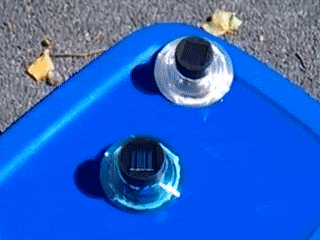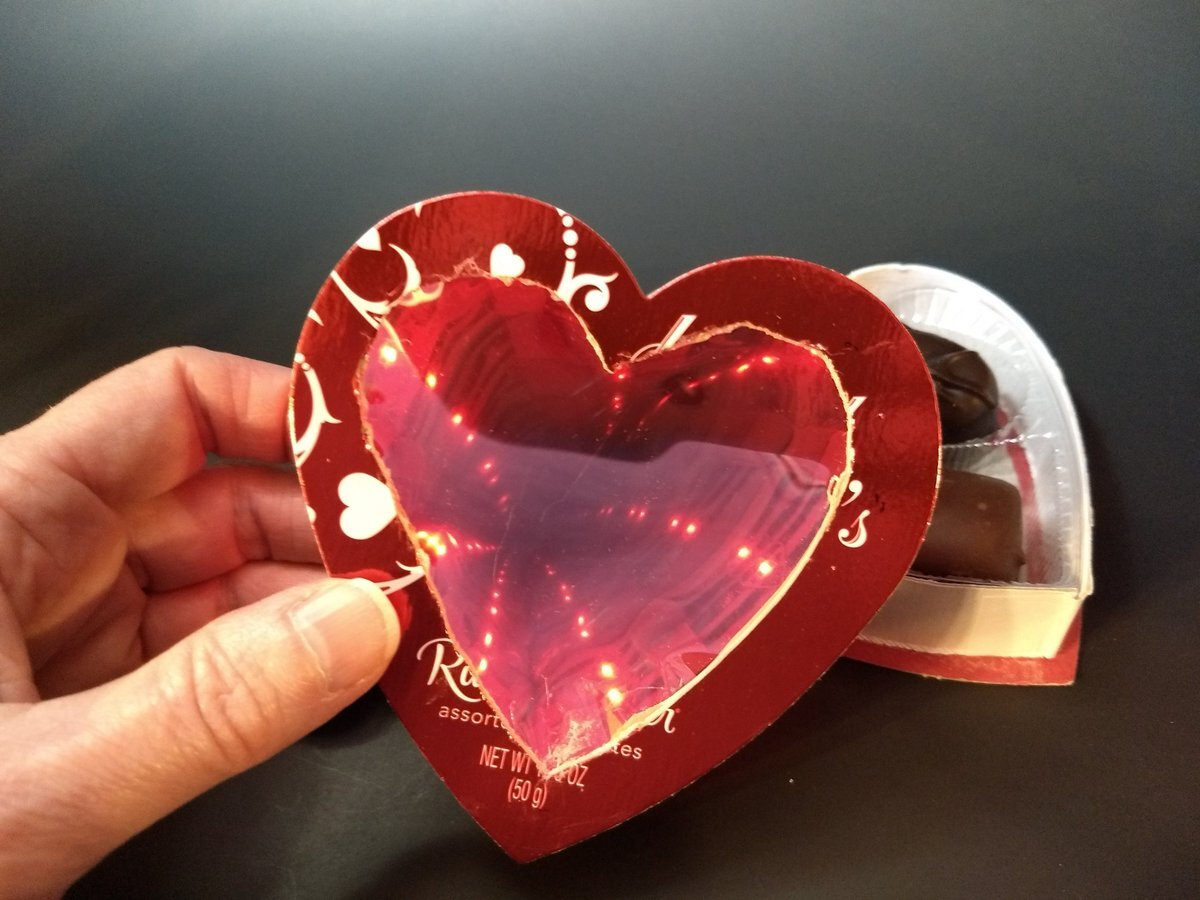Continuing with my series about teaching STEM subjects without a curriculum, here are some hands-on ideas to introduce your kids to concepts in technology like robotics, other electronics, and software. As always, keep in mind that these activities and supplies can be used to touch on a variety of subjects.
You’ve probably noticed that the number of robotics and electronics sets has exploded over the past decade. They range from pre-built models that you program with an app, to kits that let you design, build, and program your own robot from scratch.
However, kids can make their own electronics projects – everything from low-tech robotic systems to sensor-driven wearables that light up and play music -- using just everyday stuff, plus a few inexpensive electronics parts.
As the author of several books of low-tech/no-tech activities that teach kids about electronics and programming, I have a preference for STEM resources that encourage kids to design and build their own circuits into creations they make by hand, from materials around them.
For example, these Solar WobbleBots from my book BOTS are made from dollar store garden lights, old CDs, and the top of a slurpy cup. The only special part you need is a solar-compatible DC motor.
Research shows it’s the best way to teach kids how electronics work – and I know from experience it helps get kids thinking about ways to add onto their projects and come up with their own ideas.
But most of all, combining technology with crafts makes it less scary for people who don’t feel comfortable with math and science. Parents and teachers with no STEM background have used my book BOTS as a complete introductory robotics course.
My book BOTS! is a complete robotics curriculum!
Here are a few of my favorite products and software for helping kids learn about technology. I’ve chosen them because they are the easiest for kids to work with on their own, and for non-techy parents to feel comfortable using. I’ve included links to helpful teaching guides where available, written by their creators or by other teachers. Check them out!
Software
Even if you don’t have any hardware, your kids can learn technology concepts with some of the free online educational software available. Here are some I use in my classes:
Scratch is a programming language and a safe online community where children can program and share interactive media such as stories, games, and animation with people from all over the world. It is designed and maintained by the Lifelong Kindergarten group at the MIT Media Lab, and has been used by educators for decades. Works on computers and touchscreens. It’s widely used and there are a ton of courses and activities built around it. To start, go to https://scratch.mit.edu/educators.
Microsoft MakeCode looks and feels a lot like Scratch, but it’s made to work with specific microcontroller boards (see below) so you can program lights, motors, and sounds using built-in or added sensors. A simulated board on the screen lets you practice coding even if you don’t own the hardware. MakeCode is constantly being upgraded, and now includes MakeCode Arcade, designed for building 8-bit style games and animations you can play on the screen or download to special game microcontrollers. Some educator resources can be found at https://makecode.com/online-learning.
Hour of Code is like a free sampler of many different kinds of educational software that teach computer concepts. Some of the software is also free, and some is available by subscription. Hour of Code hosts a yearly event with new activities, plus all the past years’ activities are available on their site. If you’re interested in a particular type of software, you can also go to its site and see if it has an Hour of Code activity.
Hardware
Studies show that having kids design their own circuits, particularly on paper or fabric, is the best way to teach kids how electric circuits work.
LEDs and DC motors are the most basic supplies you need to learn about switches and sensors that turn on a light or make a robot move around. For LEDs and small vibrating motors, you’ll need a 3 volt CR2032 coin battery (or similar). For 1.5 volt DC hobby motors, you’ll need a AA or AAA battery. For the circuit itself, you can use wire, aluminum foil or foil tape, or sturdy conductive fabric tape. You can buy your own parts or get kits from educational electronics retailers like Brown Dog Gadgets, but the quickest way to get started is to take apart small devices from your junk drawer or dollar store. Scrappy Circuits is a great resource for creating your own electronics kit.
Find sample projects from my books and more!
Adafruit Circuit Playground Express (CPX for short) is my favorite programmable microcontroller. I use it to teach kids to play music and build robots, electronic games, and even wearables! The CPX has built-in color-changing LED lights, a speaker, and pads to connect additional components like servo motors or strands of lights. You can also use the pads as touch sensors, along with built-in sensors that detect light, sound, motion, and temperature. The infrared transmitter and receiver lets you send signals from one board to another. You can find an ever-growing collection of instructions for kids on the MakeCode page. For other software languages like CircuitPython, check Adafruit’s learning guides. (About $25)
BBC Micro:bit is smaller, cheaper (about $15), and more widely used than CPX, though the two boards can be used in many of the same projects. It only comes with motion and light sensing, and there’s no built-in speaker. But it lets you send and receive data and program it using Bluetooth, and the small red LED grid that lets you show letters, numbers, real-time sensor readings, and animations. It has a robust educational community sharing activities, ideas, and curriculum, plus numerous kits and robotics platforms designed around it, such as the Dexter Gigglebot and kits from Tech will Save Us.
Makey Makey is a touch-sensitive electronic board that plugs into a computer. Using clip-on wires, it turns any conductive object – a banana, a foil-covered ball, or a pencil drawing -- into a computer key. You don’t download your code to the board itself, so it’s a little easier to use than the CPX or Micro:bit, and it’s great for creating controllers for games, stories, and music. It has its own blocks in Scratch (both come from MIT). Look for projects by and for teachers on the Makey Makey page on Instructables (About $50)
littleBits are electronics building pieces that lets kids learn how different components work without programming. Unlike the similar Snap Circuits, you can incorporate littleBits into your own creations using cereal boxes, craft sticks, and other recycled materials. My favorite is the Gizmos & Gadgets Kit (about $185 on Amazon). If you can find the now-discontinued 1st edition, you’ll get radio remote control bits you can use on their own, rather than Bluetooth bits that require a smartphone app. The company has undergone some changes since they were bought by Sphero (another well-known robotics education line) in 2019, but you can still find lots of excellent teaching resources at https://classroom.littlebits.com/educator-tips.
Circuit Stickers are stick-on LEDs that can be used with conductive tape to create light-up art of all kinds. The Love to Code Creative Coding Kit with a clip-on Chibi Chip lets you program the lights from a computer or mobile device with an earphone jack. The accompanying book introduces computer programming concepts with a storybook format with room to build circuits right on the page. More educator tips at https://chibitronics.com/education. (Under $100)
Lego Robotics now offers kits for many levels, from the new version of the LEGO MINDSTORMS Robot Inventor set (around $400), with instructions for five unique robots, to the BOOST Creative Toolbox (about $150, shown here) for ages 7-12 that can be used to build robots, an auto factory, and an electronic guitar.
LEGO Education also has a separate line of products for classroom and home instruction with standards-aligned lessons, including the WeDo 2.0 Core Set.
This page may contain affiliate links. Thanks for helping me to keep producing great learning resources for students and families!









